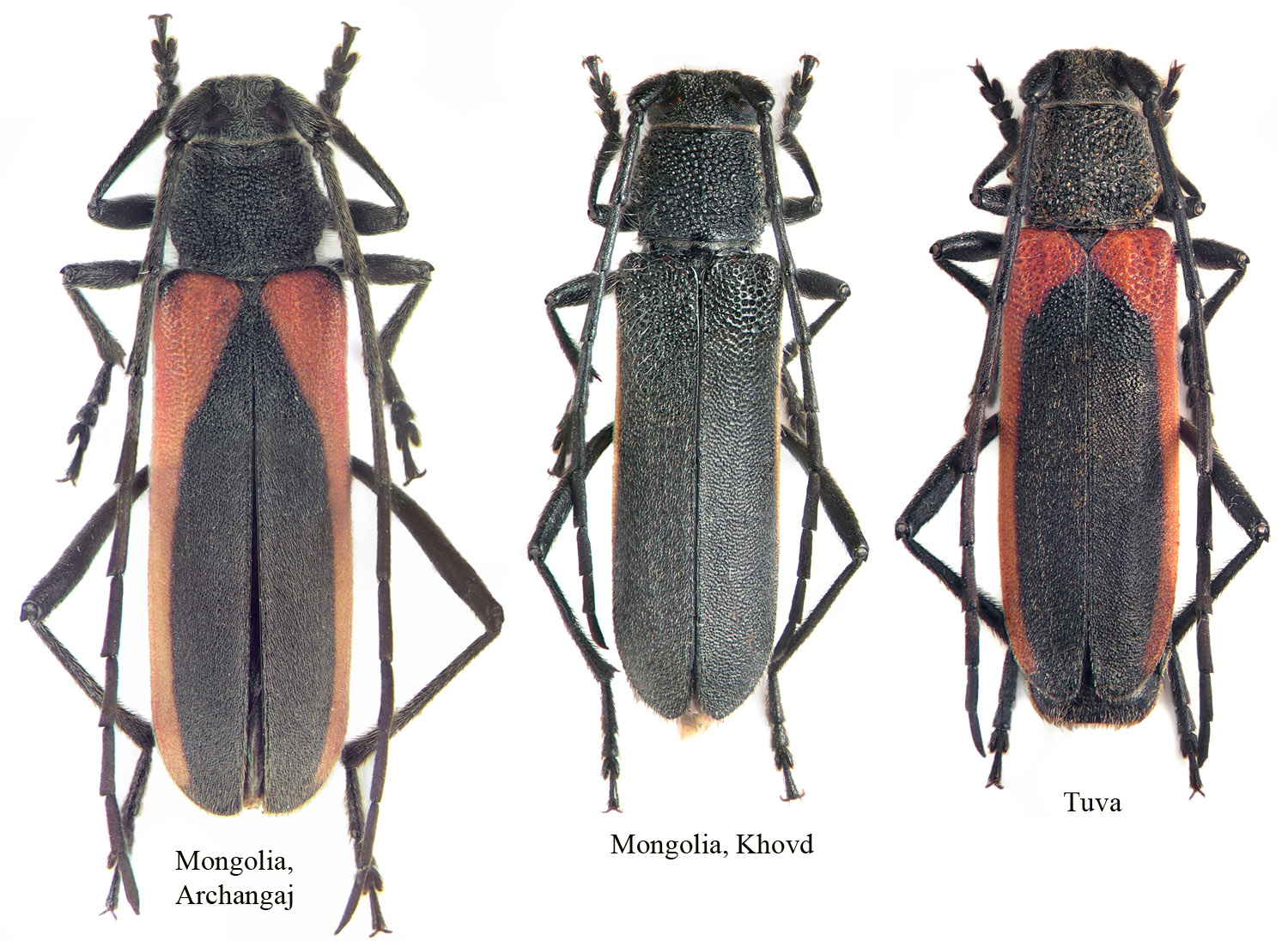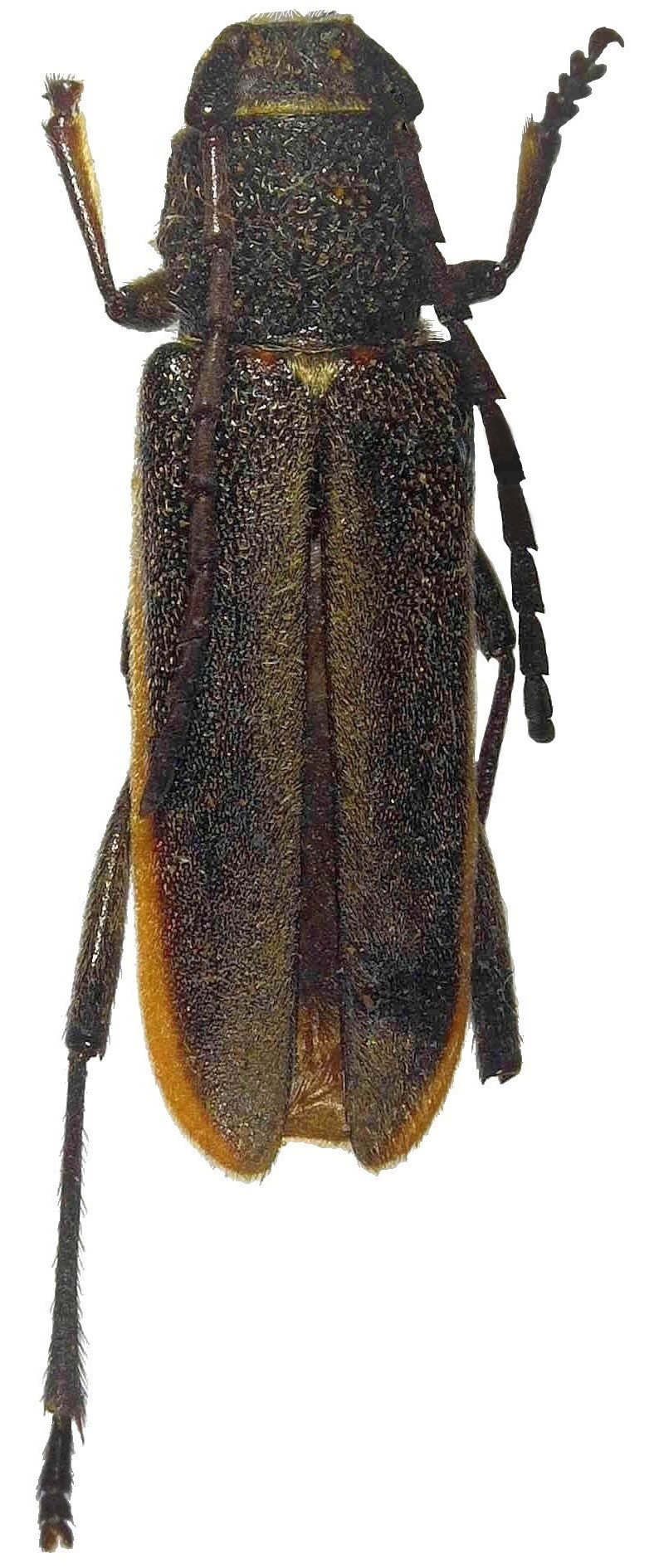| T O P I C R E V I E W |
| Max |
Posted - 27/01/2022 : 16:22:26

330.42 KB
Really rare species for the forum.
From my old friend (RIP..I miss him) Sergey Tchastilov.
Anoplistes gobiensis (Namkhaidorzh, 1973)
Female, 12.5 mm.
Mongolia, Khovd aimak, NW sl. of Mongolian Altai Mts., Sutai Uul, h = 1750 m., 9.VII.2003 |
| 6 L A T E S T R E P L I E S (Newest First) |
| Orish |
Posted - 17/11/2024 : 20:02:04
Yes, relative length of the antennae may slightly differ in smaller or larger specimens, but we are still talking about a similar length, which is much longer than in A. gobiensis. Anoplistes halodendri has a very characteristic pronotal punctation (well visible in your females), which is clearly visible in all ecotypes and subspecies of this species, but is also similar in a few closely related species of this species group (e.g. A. jacobsoni). The punctuation structure is very well visible in the SEM images that will be presented in the revision, and which have already been partially shown in the paper on the mountain ecotype (Figure 3).
Lech |
| Max |
Posted - 10/11/2024 : 12:37:42
Many thanks Lech. I agree absolutely.
I had previously thought that female of mine had rather short antennae and thin yellovish margin (not rose-pink like other minutus or kozlovi) so.. when there's not enough material, it's hard to make sense of it.

442.43 KB |
| Orish |
Posted - 09/11/2024 : 23:48:36
Hi Max,
Yes, I have studied all type material of A. gobiensis - it is a different species group than A. halodendri. However, Anoplistes is a difficult group in general, mainly due to the confusing elytral pattern, which at the same time can be very similar between different species (-group) and very variable within one species (e.g. ecotypes in A. halodendri). Soon I will publish a full revision of the genus.
Anoplistes gobiensis among other differences has the antenna "a level" shorter compared to A. halodendri. In females, they extend slightly beyond the middle of the elytra, and antennomeres are clearly thicker and more serrated, with very different ratio of particular antennomeres.
Below I am attaching a photo of female paratype (allotype, a mating partner of the holotype in this case). We presented it already in this paper (https://drive.google.com/file/d/12GrC9NBdvjR2VfgLk4TrWcGIwVIhohPC/view), with more information about the species - however, the type locality provided in our paper is wrong - we realised it only last year.

308.98 KB |
| Max |
Posted - 01/11/2024 : 14:23:44
Hi Lech
These are very interesting papers, no doubt about it. Trying to discover criteria for taxon rank is always of vivid interest to me. I afraid it will someday end up with assigning inventory numbers or some other way of codifying stable gene complexes. And a lot of names will only be demanded by collectors. I expect many discoveries in challenging groups. And a lot of names will only be demanded by collectors. I expect many discoveries in challenging groups.
About the beetle - I may have misidentified using only Namhaydorj's description. It is in Russian, but not illustrated in any way. I haven't seen the type. Have you seen a real gobiensis? |
| Orish |
Posted - 27/10/2024 : 16:11:42
Hi,
It is true that A. gobiensis is one of the rarest Palaearctic cerambycids, but this species is not presented in the photo. This is a female of the black form (mountain ecotype) of Anoplistes halodendri. Check out our newest paper published in Zoologica Scripta: https://www.researchgate.net/publication/385285269
Coincidentally, I found this thread a few days before publishing the paper.
Such completely black forms, or with very small reddish elytral spots, are known only from western Mongolia, mainly from the Khovd aimak.
There was a suspicion that it was a new subspecies, but it is only an ecological form (ecotype) living in high mountains and surrounding area.
The same situation was with Anoplistes halodendri and A. kozlovi. Anoplistes kozlovi is only an ecological form of A. halodendri that lives in sandy habitats. More information in this paper: https://arthropod-systematics.arphahub.com/article/61499/
Between these three forms, apart from the obvious difference in the elytral pattern/colouration, there is no morphological difference (including endophallus and parameres). They are also nearly identical genetically, and the difference in COI is below the threshold of subspecies, not even mention species.
Lech |
| Xavier |
Posted - 27/01/2022 : 17:06:45
Very nice picture ! Thanks a lot. |
|
|


